
Friedrich Christian Anton Lang, better known as Fritz Lang, was an Austrian-American film director, screenwriter, and producer who worked in Germany and later the United States. One of the best-known émigrés from Germany's school of Expressionism, he was dubbed the "Master of Darkness" by the British Film Institute. He has been cited as one of the most influential filmmakers of all time.

Raymond Hart Massey was a Canadian actor, known for his commanding, stage-trained voice. For his lead role in Abe Lincoln in Illinois (1940), Massey was nominated for the Academy Award for Best Actor. He reprised his role as Lincoln on television and in How the West Was Won (1962). Among his other well-known roles were Dr. Gillespie in the NBC television series Dr. Kildare (1961–1966), John Brown in Santa Fe Trail (1940) and Seven Angry Men (1955), Abraham Farlan in A Matter of Life and Death (1946), and Jonathan Brewster in Arsenic and Old Lace (1944).

Scarlet Street is a 1945 American film noir directed by Fritz Lang. The screenplay concerns two criminals who take advantage of a middle-aged painter in order to steal his artwork. The film is based on the French novel La Chienne by Georges de La Fouchardière, which had been previously dramatized on stage by André Mouëzy-Éon, and cinematically as La Chienne (1931) by director Jean Renoir.
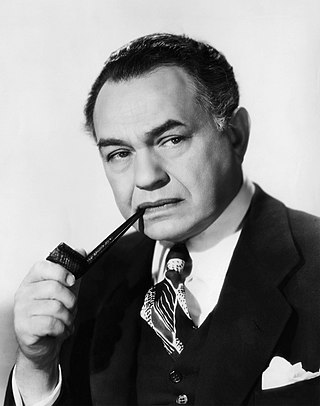
Edward G. Robinson was an American actor of stage and screen, who was popular during Hollywood's Golden Age. He appeared in 30 Broadway plays, and more than 100 films, during a 50-year career, and is best remembered for his tough-guy roles as gangsters in such films as Little Caesar and Key Largo. During his career, Robinson received the Cannes Film Festival Award for Best Actor for his performance in House of Strangers.

Joan Geraldine Bennett was an American stage, film, and television actress, one of three acting sisters from a show-business family. Beginning her career on the stage, Bennett appeared in more than 70 films from the era of silent films, well into the sound era. She is best remembered for her film noir femme fatale roles in director Fritz Lang's films—including Man Hunt (1941), The Woman in the Window (1944), and Scarlet Street (1945)—and for her television role as matriarch Elizabeth Collins Stoddard in the gothic 1960s soap opera Dark Shadows, for which she received an Emmy nomination in 1968.
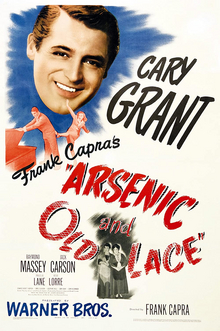
Arsenic and Old Lace is a 1944 American screwball mystery black comedy film directed by Frank Capra and starring Cary Grant. The screenplay by Julius J. Epstein and Philip G. Epstein is based on Joseph Kesselring's 1941 play of the same name. The contract with the play's producers stipulated that the film would not be released until the Broadway run ended. The original planned release date was September 30, 1942. The play was hugely successful, running for three and a half years, so the film was not released until 1944.
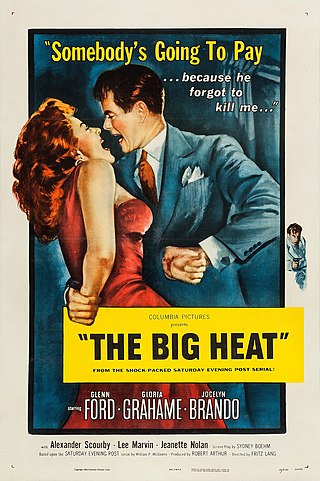
The Big Heat is a 1953 American film noir crime film directed by Fritz Lang starring Glenn Ford, Gloria Grahame, and Jocelyn Brando about a cop who takes on the crime syndicate that controls his city.

The Blue Gardenia is a 1953 American film noir starring Anne Baxter, Richard Conte, and Ann Sothern. Directed by Fritz Lang from a screenplay by Charles Hoffman, it is based on the novella The Gardenia by Vera Caspary.
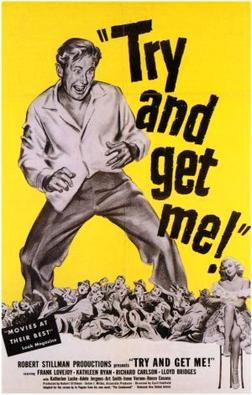
The Sound of Fury is a 1950 American crime film noir directed by Cy Endfield and starring Frank Lovejoy, Kathleen Ryan, Richard Carlson. The film is based on the 1947 novel The Condemned by Jo Pagano, who also wrote the screenplay.

Lady on a Train is a 1945 American light-hearted comedy crime film noir directed by Charles David and starring Deanna Durbin, Ralph Bellamy, and David Bruce.

James Stewart was a prolific American actor who appeared in a variety of film roles in Hollywood, primarily of the Golden Age of Hollywood. From the beginning of his film career in 1934 through his final theatrical project in 1991, Stewart appeared in more than 92 films, television programs, and short subjects.

Ministry of Fear is a 1944 American spy thriller film noir directed by Fritz Lang, and starring Ray Milland and Marjorie Reynolds. Based on the 1943 novel by Graham Greene, the film tells the story of a man just released from a mental asylum who finds himself caught up in an international spy ring and pursued by Nazi agents after inadvertently receiving something they want. The original music for the film was composed by Victor Young.
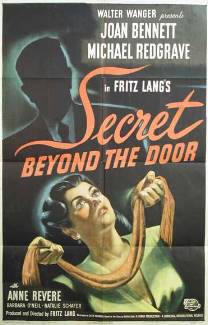
Secret Beyond the Door is a 1947 American film noir psychological thriller and a modern updating of the Bluebeard fairytale, directed by Fritz Lang, produced by Lang's Diana Productions, and released by Universal Pictures. The film stars Joan Bennett and was produced by her husband Walter Wanger. The black-and-white film noir drama is about a woman who suspects her new husband, an architect, plans to kill her.
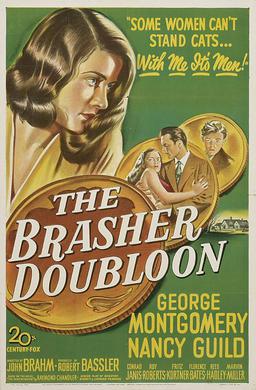
The Brasher Doubloon is a 1947 American crime film noir directed by John Brahm and starring George Montgomery and Nancy Guild. It is based on the 1942 novel The High Window by Raymond Chandler.

Woman on the Run is a 1950 American crime film noir directed by Norman Foster and starring Ann Sheridan and Dennis O'Keefe. The film was based on the April 1948 short story "Man on the Run" by Sylvia Tate and filmed on location in San Francisco.
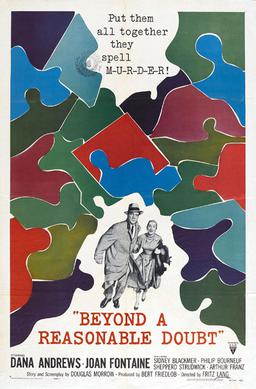
Beyond a Reasonable Doubt is a 1956 American film noir legal drama directed by Fritz Lang and written by Douglas Morrow. The film stars Dana Andrews, Joan Fontaine, Sidney Blackmer, and Arthur Franz. It was Lang's second film for producer Bert E. Friedlob, and the last American film he directed.
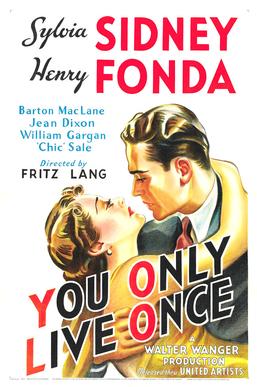
You Only Live Once is a 1937 American crime drama film directed by Fritz Lang and starring Sylvia Sidney and Henry Fonda. Considered an early film noir, the film was the second directed by Lang in the United States. At least 15 minutes were trimmed from the original 100-minute version of the film due to its then unprecedented violence. Despite the removal of such scenes, the film is widely considered an early film noir classic. The film is also known for being one of the first box-office bombs.

The Black Vampire is a 1953 Argentine film noir directed by Román Viñoly Barreto, starring Olga Zubarry and Roberto Escalada. It is inspired by Fritz Lang's M.

Man Hunt is a 1941 American political thriller film, directed by Fritz Lang and starring Walter Pidgeon and Joan Bennett. It is based on the 1939 novel Rogue Male by Geoffrey Household and is set in Europe just prior to the Second World War. Lang had fled Germany into exile in 1933 and this was the first of his four anti-Nazi films, which include Ministry of Fear, Hangmen Also Die!, and Cloak and Dagger. It was Roddy McDowall's first Hollywood film after escaping London following the Blitz. Man Hunt was one of many films released in 1941 that were considered so pro-British that they influenced neutral members of the U.S. public to sympathize with the British side in World War II.
Wanley is a surname. Notable people with the surname include:



















